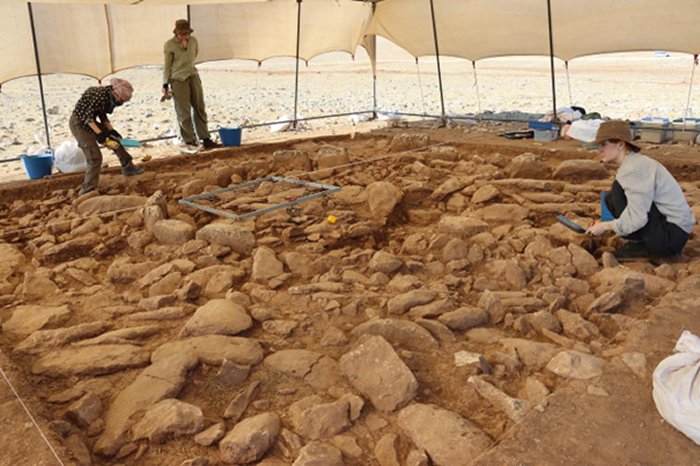Conny Waters – AncientPages.com – Mendik Tepe, with its earliest Neolithic layers, is located in the rural Payamli area of Eyyubiye, Sanliurfa Province, and was discovered by Fatma Sahin, the excavation director of Cakmaktepe, where excavation efforts at Çakmaktepe began in 2021.
An aerial view of the excavations carried out at Mendik Tepe, which is thought to be older than Gobeklitepe, described as the “zero point of history” and inscribed on the UNESCO World Heritage List in 2018, and Karahantepe in Sanliurfa, Türkiye, Aug. 27, 2025. (AA Photo)
Now, the site is investigated by Professor Douglas Baird of the University of Liverpool in collaboration with Turkish and British institutions. The excavations are part of the wider Taş Tepeler (“Stone Hills”) project, in which are included several Neolithic sites in the region.
This systematic approach enables researchers to gain a more comprehensive understanding of the network of prehistoric settlements that emerged in this region thousands of years ago.
The findings suggest that Mendik Tepe belongs to the dawn of the Neolithic. Although it is associated with Göbekli Tepe and Karahantepe, its structures show unique forms and may even precede them, ” explains Douglas Baird
Mendik Tepe is very ancient site, but initial analyses indicate that it can be dated to the dawn of the Neolithic period, even be older than Göbekli Tepe, dated to around 9600 BC.
Image credit: AA
Should these assumptions be validated, researchers say, we will be confronted with a discovery of an enormous significance. The Neolithic transformation is believed to have started in southeastern Turkey over 11,000 years ago.
It was then that people began to move from the nomadic lifestyle of hunter-gatherers to a sedentary style. Baird points out that Mendik Tepe may be the key to understanding how and why people abandoned nomadic gathering and settled permanently, starting to grow plants.
Mendik Tepe stands out for its multifunctional character against the background of other positions from this period.
Image credit: AA
Archaeologists have discovered structures of varying size and purpose, suggesting a complex social organization. Three types of structures were identified at the site: small structures with a diameter of approximately 3 meters (likely used for storing or preparing food), medium-sized buildings with a diameter of 4-5 meters (which could have served as houses), and large structures of likely ritual significance.
Mendik Tepe is set apart from Göbekli Tepe by its diverse range of functions. While Göbekli Tepe primarily served as a ritual center, Mendik Tepe appears to have been a place where daily life and spiritual practices coexisted. This distinction highlights the multifaceted role that Mendik Tepe played in its historical context.
Mendik Tepe’s architecture is also fascinating.
Unlike the characteristic T-shaped pillars found at Göbekli Tepe and Karahantepe, Mendik Tepe is distinguished by vertical stones of various forms.
Written by Conny Waters – AncientPages.com Staff Writer




